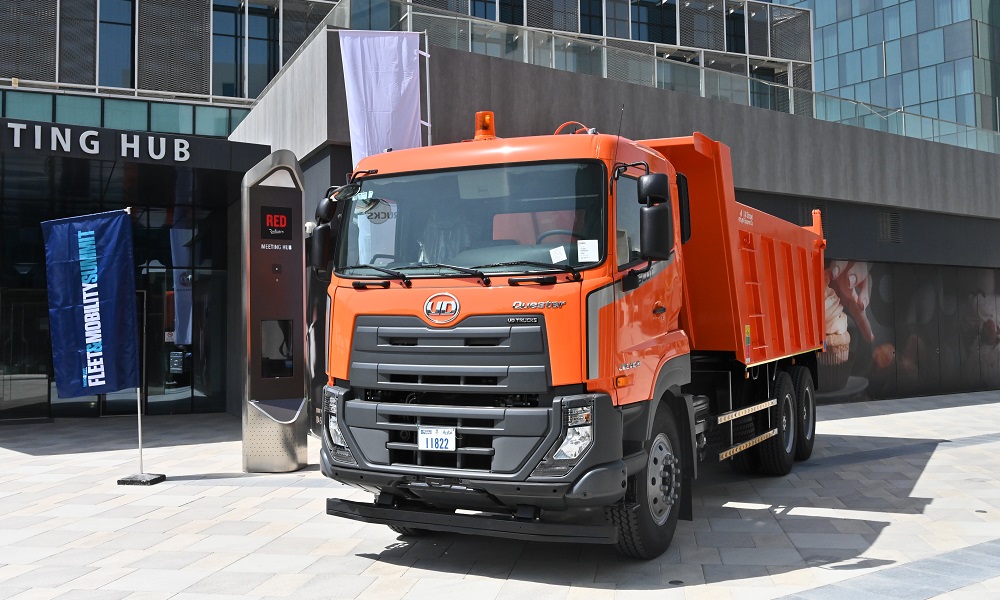When UD Trucks launched its Euro 5 Quester and Croner trucks last year it also delivered an expanded suite of telematics technologies, including features such as its vehicles tracking Telematics Gateway device.
Typifying the Japanese truck-maker’s ambition for a more connected and efficient fleet sector in the region, Wahaj Malik, sales director, UD Trucks Middle East delivered a deep dive into the technologies currently available in the market and insight into the coming era of advanced trucks and solutions at the first Fleet and Mobility Summit – where a Sharjah Municipality-owned Quester also demonstrated advance features such as the ESCOT automated transmission.
Wahaj, during your presentation you described a huge range of technologies and the potential for smarter, cleaner mobility in the market, and the journey we need to take from this point onwards. Taking a look at the situation as it stands in 2022, what’s your view on the current state of the industry and how does it need to change?
As I said, for all these things to happen connectivity is going to be key. Today, many fleet operators fleet that connectivity is more of a cost for them. They don’t see the cost value proposition benefits
We see many examples. For instance, I know a fleet operator who had the possibility to save his truck but he wouldn’t invest in the right solution and in the end there was a disaster. There are plenty of such examples.
There needs to be a behavourial mindset change.
With that in mind, how would you say customer mindsets have changed in the last say, five years? Especially with the way as digitalisation has picked up all across the globe.
They are understanding the terms, they’re asking for the features. They want the features in the truck, but the utilisation of the those features are very minimal. They don’t always understand that they have to invest a little bit on infrastructure, or maybe in terms of people, to take care of the connected solutions being offered by OEMs and manufacturers and look into how to use the data in their operation to get greater efficiencies and better performance.
This might be a bit of a chicken and egg situation, but who drives change in the industry when it comes to using technology to be more sustainable and connected?
I personally feel it’s not chicken and egg….but you have to do it together, the customers are willing to do that. They are willing to cooperate with manufacturing companies and so are dealers, but still when it comes to put some cost and investment, we see that hindrance come in – after all, they are the guys who are looking after each and every penny because they make money in the end from their services. So, I would say everyone has to work together to move forward and be a part of the change.

What do you think are the main challenges and opportunities for you when it comes to mobility?
There are three main three areas of development. The data connectivity side may be easier because the infrastructure is already there in the trucks.
We will see automation coming in but not fully autonomous as that needs more infrastructure investment and development.
Last but not least, there is electrification. For that there is three way multiplication: product infrastructure, and cost parity – and if any of them is 0, the entire development is off. We have the product coming in now, but the infrastructure still needs to be up and running.
Does this mean we have to wait to see better use of mobility technology in transportation?
Even now in this region there are ‘smaller’ technologies that are available and existing that could be used to enhance transportation.



